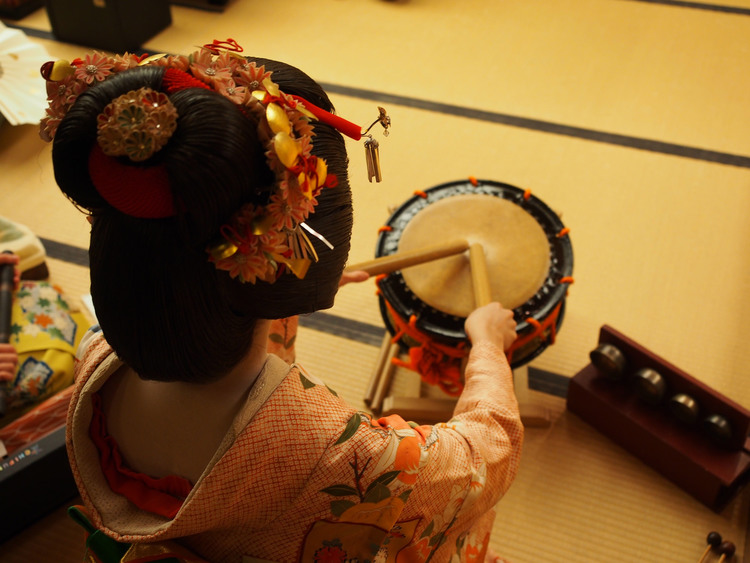Believe it or not, the original geisha hardly resembled modern geisha in any way. The first geisha were actually male, appearing around the year 1730. It was only about 20 years later that female geisha began to appear in the forms of odoriko (踊り子, meaning dancers) and shamisen players, and they quickly took over the profession, dominating it by 1780.
Read MoreGeisha, at the most fundamental level, are professional entertainers. They are trained in a variety of Japanese traditional arts, such as dancing, singing, flute, and shamisen (a traditional Japanese three-stringed instrument), as well as the art of hospitality. They also play games and engage in conversation with visitors, all in service of providing the most welcoming and intimate environment possible.
Read MoreWhile the term literally means "Japanese food," in reality the term refers to a much broader and important cultural concept. In 2013, washoku was actually added to UNESCO's list of intangible cultural heritages. The organization's explanation of washoku reveals why it is so much more than food, and why it deserves to be enshrined as an invaluable part of world culture.
Read MoreSo you've decided to take part in a formal Japanese dinner, maybe at a tea house.Today's topic is probably the most important for our readers making plans to go to Japan: How to prepare for and participate in a geisha dinner. What should you wear? What will happen during the dinner? What interactions can you expect?
Read More




